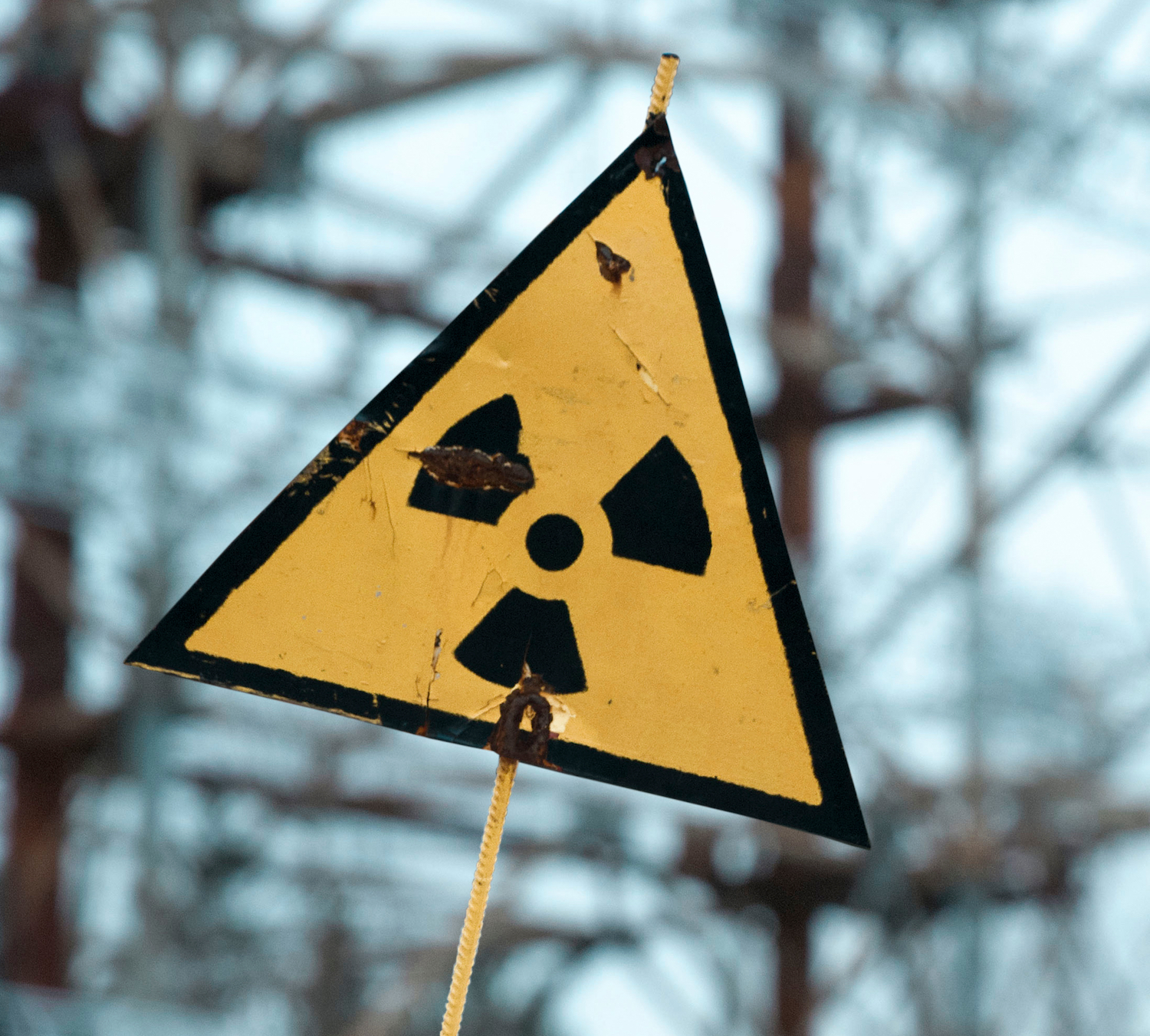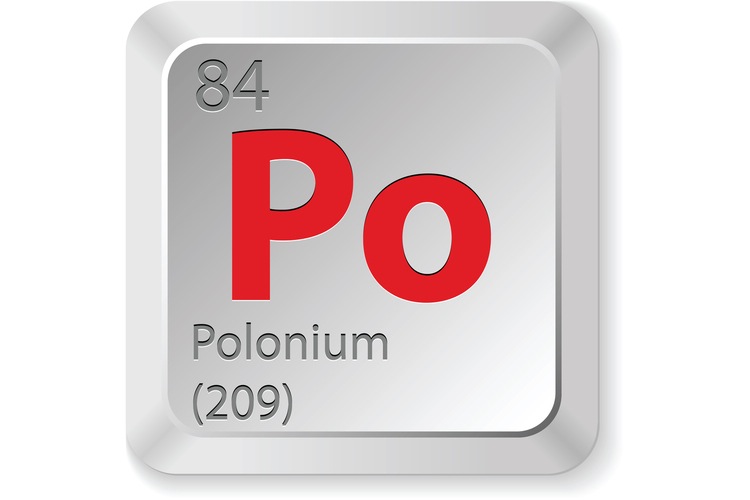Polonium: A Rare and Highly Volatile Radioactive Element

Polonium (Po) is a very rare and highly volatile radioactive metal. Before Polish-French physicist Marie Curie's discovery of polonium in 1898, uranium and thorium were the only known radioactive elements. Curie named polonium after her homeland, Poland.
Polonium is of little use to humans, with the exception of some menacing applications: It was used as a trigger in the first atomic bomb and is also a suspected poison in a couple of high-profile deaths.
In commercial applications, polonium is occasionally used to remove static electricity in machinery or dust from photographic film. It can also be used as a lightweight heat source for thermoelectric power in space satellites.
Classification
Polonium is located in Group 16 and period 6 in the periodic table of elements. It's classified as a metal because polonium's electrical conductivity decreases as its temperature rises, according to the Royal Society of Chemistry.
The element is the heaviest metal of the chalcogens, a group of elements also known as the "oxygen family." All chalcogens are found in copper ores. Other elements in the chalcogen group include oxygen, sulfur, selenium and tellurium.
There are 33 known isotopes (atoms of the same element with a different number of neutrons) of polonium, and all are radioactive. This element's radioactive instability is what makes it a fitting candidate for use in atomic bombs.
Physical characteristics
- Atomic number (number of protons in the nucleus): 84
- Atomic symbol (on the periodic table of the elements): Po
- Atomic weight (average mass of the atom): 209
- Density: 9.32 grams per cubic centimeter
- Phase at room temperature: Solid
- Melting point: 489.2 degrees Fahrenheit (254 degrees Celsius)
- Boiling point: 1,763.6 degrees F (962 degrees C)
- Most common isotope: Po-210 which has a half-life of only 138 days
Discovery
When Curie and her husband, Pierre Curie, discovered polonium, they were searching for the source of radioactivity in a naturally occurring, uranium-rich ore called pitchblende.
The two noticed that the unrefined pitchblende was more radioactive than the uranium that had been separated from it. So, they reasoned that the pitchblende must be harboring at least one other radioactive element.
The Curies purchased loads of pitchblende so that they could chemically separate the compounds in the minerals. After months of painstaking work, they finally isolated the radioactive element: a substance 400 times more radioactive than uranium, according to the International Union of Pure and Applied Chemistry (IUPAC).
Extracting polonium was challenging because there was such a miniscule amount; 1 ton of uranium ore contains only about 100 micrograms (0.0001 grams) of polonium.
Nonetheless, the Curies were able to pull out the isotope we now know as polonium-209, according to the Royal Society of Chemistry.

Sources
Traces of Po-210 can be found in the soil and air. For example, Po-210 is produced during the decay of radon-222 gas, which a result of decaying radium. In turn, radium is a decay product of uranium, which is present in almost all rocks and soil formed from rocks.
Lichens are able to absorb polonium directly from the atmosphere. In northern areas, people who eat reindeer can have higher concentrations of polonium in their blood, because reindeer eat lichens, according to Smithsonian.com.
Polonium is considered a rare natural element. Although it is found in uranium ores, it's not economical to extract as there are only around 100 micrograms of polonium in 1 ton (0.9 metric tons) of uranium ore, according to the Jefferson Lab.
Instead, polonium is obtained by bombarding bismuth-209 (a stable isotope) with neutrons in a nuclear reactor. This creates radioactive bismuth-210, which then decays into polonium through a process called beta decay, according to the Royal Society of Chemistry.
The United States Nuclear Regulatory Commission estimates that only around 100 grams (3.5 ounces) of polonium-210 is produced worldwide each year.
Commercial uses
Because of its high radioactivity, polonium has few commercial applications. Among the element's limited uses are eliminating static electricity in machinery and removing dust from photographic film. In both applications, the polonium must be carefully sealed to protect the user.
The element is also used as a lightweight heat source for thermoelectric power in satellites and other spacecraft. That's because polonium decays rapidly, and as it does, it releases a large amount of energy in the form of heat. Just a single gram of polonium will reach a temperature of 500 degrees C (932 degrees F) as it degrades, according to the Royal Society of Chemistry.
Atomic bomb
During the middle of World War II, the Army Corps of Engineers began to organize the Manhattan Engineer District, a top-secret research and development program that would ultimately produce the world's first nuclear weapons.
Before the 1940s, there was no reason to isolate polonium in its pure form or to produce it in any substantial quantity, because there was no known use for it and very little was known about it. But the district's engineers began studying polonium and found the element to be an important ingredient for their nuclear weapon.
A combination of polonium and beryllium, another rare element, acted as the bomb's initiator, according to the Atomic Heritage Foundation.
After the war, the polonium research project was transferred to Mound Laboratory in Miamisburg, Ohio. Completed in 1949, Mound Lab was the first permanent Atomic Energy Commission facility for nuclear weapons development.
Poisoning
Polonium is toxic to humans, even in very small amounts.
The first person to die of polonium poisoning may have been Marie Curie's daughter Irène Joliot-Curie. In 1946, a polonium capsule exploded on her lab bench which may have been the reason she contracted leukemia and died 10 years later, according to Smithsonian.com.
Polonium poisoning was also what killed Alexander Litvinenko, a former Russian spy who had been living in London in 2006 after claiming political asylum.
Poisoning was also suspected in the 2004 death of the Palestinian leader Yasser Arafat, as surprisingly high levels of polonium-210 were detected on his clothes, according to The Wall Street Journal.
A 2011 study published in the journal Nicotine & Tobacco Research found that tobacco companies have been aware that cigarettes and other tobacco-containing products contain low levels of polonium. The study's authors calculated that the radioactivity from polonium in cigarettes is responsible for up to 138 deaths for every 1,000 smokers over a period of 25 years.
Other research has shown that twice as much polonium is found in the ribs of smokers as in those of nonsmokers, according to the U.S. National Institute of Health's Toxicology Data Network.
Further reading:
- Frequently Asked Questions about Polonium 210, from the CDC.
- Six Secrets of Polonium, from Smithsonian magazine.
- NIH's Hazardous Substances Data Bank entry for radioactive polonium.
Sign up for the Live Science daily newsletter now
Get the world’s most fascinating discoveries delivered straight to your inbox.











